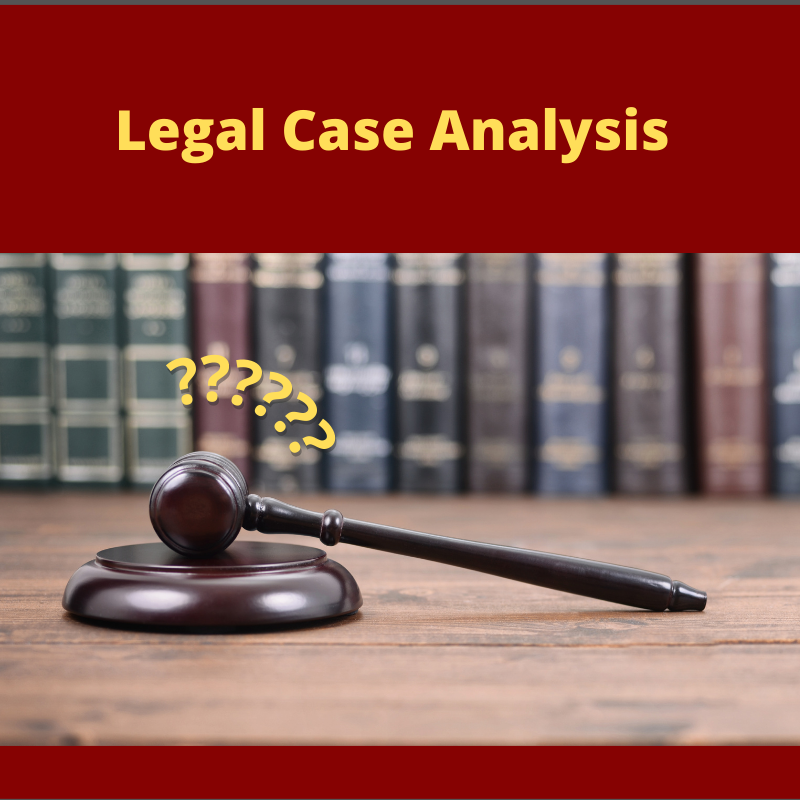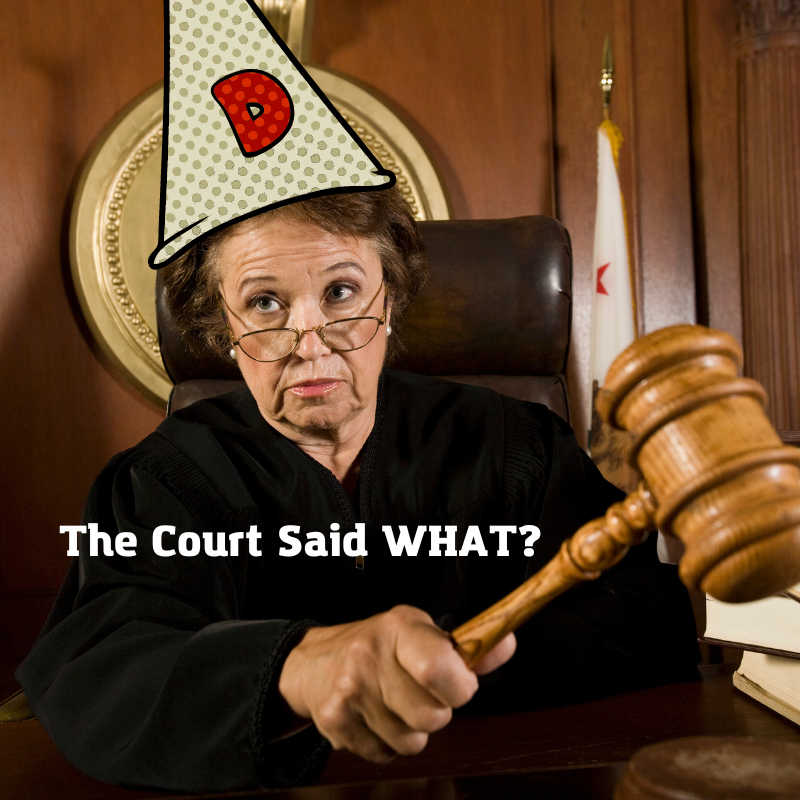It has been a long week of reading lots and lots of court documents. Hopefully useful to you all. Managed to find a bug in the site I used. Sent in an error report and made sure the documents I had paid for were properly uploaded. Made an off hand request for a feature and the lead developer said “Feel free to add it”. It was very nicely done.
So I’ve completed my first contribution to his project. I have more to do but it is a start.
Regardless, I just don’t have the energy to read and analyze another case right now so you all get a link dump. Enjoy.
[visual-link-preview encoded=”eyJ0eXBlIjoiZXh0ZXJuYWwiLCJwb3N0IjowLCJwb3N0X2xhYmVsIjoiIiwidXJsIjoiaHR0cHM6Ly9ueXBvc3QuY29tLzIwMjMvMDMvMjkvbmFzaHZpbGxlLWNvcHMtd2hvLXNob3QtYXVkcmV5LWhhbGUtaGFpbGVkLWZvci10aGVpci1hY3Rpb25zLyIsImltYWdlX2lkIjotMSwiaW1hZ2VfdXJsIjoiaHR0cHM6Ly9ueXBvc3QuY29tL3dwLWNvbnRlbnQvdXBsb2Fkcy9zaXRlcy8yLzIwMjMvMDMvbmFzaHZpbGxlLWhlcm8tY29wcy1jb21wLmpwZz9xdWFsaXR5PTc1JnN0cmlwPWFsbCZ3PTEwMjQiLCJ0aXRsZSI6Ik5hc2h2aWxsZSBjb3BzIHdobyBzaG90IEF1ZHJleSBIYWxlIGFyZSBNYXJpbmUgdmV0IGFuZCDigJhwcmVjaXNpb24gcG9saWNlbWFu4oCZIiwic3VtbWFyeSI6Ik5hc2h2aWxsZSBjb3BzIE1pY2hhZWwgQ29sbGF6byBhbmQgUmV4IEVuZ2VsYmVydCBhcmUgYmVpbmcgaGFpbGVkIGFzIGhlcm9lcyBmb3IgZ3VubmluZyBkb3duIENvdmVuYW50IFNjaG9vbCBzaG9vdGVyIEF1ZHJleSBIYWxlLiBUaGV54oCZdmUgZG9uZSBpdCBiZWZvcmUuIiwidGVtcGxhdGUiOiJ1c2VfZGVmYXVsdF9mcm9tX3NldHRpbmdzIn0=”]
[visual-link-preview encoded=”eyJ0eXBlIjoiZXh0ZXJuYWwiLCJwb3N0IjowLCJwb3N0X2xhYmVsIjoiIiwidXJsIjoiaHR0cHM6Ly93d3cubmJjMTIuY29tLzIwMjMvMDMvMjcveW91bmdraW4tc2lnbnMtZ3VuLXNhZmUtdGF4LWNyZWRpdC1iaWxsLWdhcm5lcnMtc3VwcG9ydC1ib3RoLXNpZGVzLWd1bi1kZWJhdGUvIiwiaW1hZ2VfaWQiOi0xLCJpbWFnZV91cmwiOiJodHRwczovL2dyYXktd3didC1wcm9kLmNkbi5hcmNwdWJsaXNoaW5nLmNvbS9yZXNpemVyL1BBc2lScXBUNm1XOEdSTmYtM1RQQkNyaDlhWT0vMTIwMHg2MDAvc21hcnQvZmlsdGVyczpxdWFsaXR5KDg1KS9jbG91ZGZyb250LXVzLWVhc3QtMS5pbWFnZXMuYXJjcHVibGlzaGluZy5jb20vZ3JheS9VUDNYS0UzQVhSSFMzTFdETlNBWDJGSUYyRS5wbmciLCJ0aXRsZSI6IllvdW5na2luIHNpZ25zIGd1biBzYWZlIHRheCBjcmVkaXQgYmlsbCwgZ2FybmVycyBzdXBwb3J0IGZyb20gYm90aCBzaWRlcyBvZiBndW4gZGViYXRlIiwic3VtbWFyeSI6Ikdvdi4gR2xlbm4gWW91bmdraW4gcHV0IHBlbiB0byBwYXBlciBvbiBhIG5ldyBiaWxsIG1ha2luZyBpdCBlYXNpZXIgYW5kIG1vcmUgYWZmb3JkYWJsZSB0byBsb2NrIHVwIGZpcmVhcm1zLiIsInRlbXBsYXRlIjoidXNlX2RlZmF1bHRfZnJvbV9zZXR0aW5ncyJ9″]
This is what real “gun safety” looks like. Encouraging people to buy and use gun safes.
[visual-link-preview encoded=”eyJ0eXBlIjoiZXh0ZXJuYWwiLCJwb3N0IjowLCJwb3N0X2xhYmVsIjoiIiwidXJsIjoiaHR0cHM6Ly93d3cub3JlZ29ubGl2ZS5jb20vY3JpbWUvMjAyMy8wMy9vcmVnb25zLXN0YWxsZWQtZ3VuLWNvbnRyb2wtbWVhc3VyZS0xMTQtZ2V0cy1uZXctbGlmZS1hcy1zdGF0ZS1iaWxsLmh0bWwiLCJpbWFnZV9pZCI6LTEsImltYWdlX3VybCI6Imh0dHBzOi8vd3d3Lm9yZWdvbmxpdmUuY29tL3Jlc2l6ZXIvdVVpbkJWbHlwWmF5MGRUTm9NUmdKQ25RbXRNPS8xMjgweDAvc21hcnQvY2xvdWRmcm9udC11cy1lYXN0LTEuaW1hZ2VzLmFyY3B1Ymxpc2hpbmcuY29tL2FkdmFuY2Vsb2NhbC82SEQ3VUYyUklOQUxOS1lMSU5VSEtRSklQWS5qcGciLCJ0aXRsZSI6Ik9yZWdvbuKAmXMgc3RhbGxlZCBndW4gY29udHJvbCBNZWFzdXJlIDExNCBnZXRzIG5ldyBsaWZlIGFzIHN0YXRlIGJpbGwiLCJzdW1tYXJ5IjoiU3RhdGUgU2VuLiBGbG95ZCBQcm96YW5za2ksIEQtRXVnZW5lLCBjaGFpciBvZiB0aGUgU2VuYXRlIEp1ZGljaWFyeSBDb21taXR0ZWUsIG9uIE1vbmRheSBwcmVzaWRlZCBvdmVyIGhlYXJpbmdzIG9uIGEgbmV3IGJpbGwgdGhhdCBpbmNvcnBvcmF0ZXMgbWFueSBvZiB0aGUgZ3VuIGNvbnRyb2wgcmVndWxhdGlvbnMgdm90ZXJzIGFwcHJvdmVkIHVuZGVyIE1lYXN1cmUgMTE0LCB5ZXQgY2hhbmdlcyBzb21lIG9mIGl0cyBwcm92aXNpb25zLiIsInRlbXBsYXRlIjoidXNlX2RlZmF1bHRfZnJvbV9zZXR0aW5ncyJ9″]
The state legislature has gone as far as inserting language into the bill to require that any suit filed must be brought in Marion County. This is to keep anybody from challenging in red counties. Marion County is very very left leaning.
[visual-link-preview encoded=”eyJ0eXBlIjoiZXh0ZXJuYWwiLCJwb3N0IjowLCJwb3N0X2xhYmVsIjoiIiwidXJsIjoiaHR0cHM6Ly93d3cud2xucy5jb20vbmV3cy9wcm90ZXN0LWdhdGhlcnMtYXQtY2FwaXRvbC1sYXduLWluLXN1cHBvcnQtb2YtZ3VuLXJpZ2h0cy8iLCJpbWFnZV9pZCI6LTEsImltYWdlX3VybCI6Imh0dHBzOi8vd3d3LndsbnMuY29tL3dwLWNvbnRlbnQvdXBsb2Fkcy9zaXRlcy81MC8yMDIzLzAzL1JhbGx5LmpwZz93PTEyODAiLCJ0aXRsZSI6IlByb3Rlc3QgZ2F0aGVycyBhdCBDYXBpdG9sIGxhd24gaW4gc3VwcG9ydCBvZiBndW4gcmlnaHRzIiwic3VtbWFyeSI6IkRvemVucyBnYXRoZXJlZCBhdCB0aGUgQ2FwaXRvbCBsYXduIG9uIFNhdHVyZGF5IHRvIGNhbGwgZm9yIGxhd21ha2VycyB0byDigJxzdG9wIGluZnJpbmdpbmcgb24gdGhlaXIgZ3VuIHJpZ2h0cy4iLCJ0ZW1wbGF0ZSI6InVzZV9kZWZhdWx0X2Zyb21fc2V0dGluZ3MifQ==”]
Amazing how they took that photo designed to show just how small the protest is. Compared to watching them bunch Moms Demand into a tight tight cluster to make it look like a larger protest.
[visual-link-preview encoded=”eyJ0eXBlIjoiZXh0ZXJuYWwiLCJwb3N0IjowLCJwb3N0X2xhYmVsIjoiIiwidXJsIjoiaHR0cHM6Ly93d3cua2Rydi5jb20vbmV3cy9uZXctbWVhc3VyZS0xMTQtY2FzZS1maWxpbmdzLWludm9sdmUtaGVhcmluZy10cmlhbC1hbmQtZGVmZW5kYW50cy1ub3RpY2UtZm9yLWRlZmF1bHQtanVkZ21lbnQvYXJ0aWNsZV9kNGQwYzA3OC1iYjBkLTExZWQtYjc5ZC0xNzI2ZjllY2QzZGIuaHRtbCIsImltYWdlX2lkIjotMSwiaW1hZ2VfdXJsIjoiaHR0cHM6Ly9ibG94aW1hZ2VzLm5ld3lvcmsxLnZpcC50b3dubmV3cy5jb20va2Rydi5jb20vY29udGVudC90bmNtcy9hc3NldHMvdjMvZWRpdG9yaWFsL2EvOTIvYTkyYmZlZTQtODMyMC0xMWVkLWFmNGMtM2IyZGM3NjllMjMyLzYzYTY0NTlkZDY3YzcuaW1hZ2UuanBnP2Nyb3A9NjQwJTJDMzM2JTJDMCUyQzExJnJlc2l6ZT02NDAlMkMzMzYmb3JkZXI9Y3JvcCUyQ3Jlc2l6ZSIsInRpdGxlIjoiTmV3IE1lYXN1cmUgMTE0IGNhc2UgZmlsaW5ncyBpbnZvbHZlIGhlYXJpbmcsIHRyaWFsIGFuZCBwbGFpbnRpZmZz4oCZIG5vdGljZSBmb3IgZGVmYXVsdCBqdWRnbWVudCIsInN1bW1hcnkiOiJOZXcgZmlsaW5ncyBpbiBhIGxhd3N1aXQgYWdhaW5zdCB0aGUgU3RhdGUgb2YgT3JlZ29uIGZvciBpdHMgcGVuZGluZyBndW4gY29udHJvbCBtZWFzdXJlIGludm9sdmVzIHRocmVlIG5ldyBjYXNlIGVudHJpZXMgU3VuZGF5LiIsInRlbXBsYXRlIjoidXNlX2RlZmF1bHRfZnJvbV9zZXR0aW5ncyJ9″]
[visual-link-preview encoded=”eyJ0eXBlIjoiZXh0ZXJuYWwiLCJwb3N0IjowLCJwb3N0X2xhYmVsIjoiIiwidXJsIjoiaHR0cHM6Ly93d3cubnByLm9yZy8yMDIzLzAyLzEwLzExNTM5Nzc5NDkvbWFqb3ItdGFrZWF3YXlzLWZyb20tdGhlLWF0Zi1ndW4tdmlvbGVuY2UtcmVwb3J0IiwiaW1hZ2VfaWQiOjAsImltYWdlX3VybCI6IiIsInRpdGxlIjoiNiBtYWpvciB0YWtlYXdheXMgZnJvbSB0aGUgQVRGJ3MgZmlyc3QgcmVwb3J0IGluIDIwIHllYXJzIG9uIFUuUy4gZ3VuIGNyaW1lICIsInN1bW1hcnkiOiJTdG9sZW4gZ3VucywgdW50cmFjZWFibGUgd2VhcG9ucyBhbmQgb3RoZXIgZGVhZGx5IGRldmljZXMgYXJlIGJlY29taW5nIG1vcmUgcHJldmFsZW50IGluIFUuUy4gZ3VuIGNyaW1lcywgbmV3IGZlZGVyYWwgZGF0YSBzaG93cy4gIiwidGVtcGxhdGUiOiJ1c2VfZGVmYXVsdF9mcm9tX3NldHRpbmdzIn0=”]
[visual-link-preview encoded=”eyJ0eXBlIjoiZXh0ZXJuYWwiLCJwb3N0IjowLCJwb3N0X2xhYmVsIjoiIiwidXJsIjoiaHR0cHM6Ly93d3cuY2luY2lubmF0aS5jb20vc3RvcnkvbmV3cy9wb2xpdGljcy8yMDIzLzAyLzAyL2NpbmNpbm5hdGktZ3VuLXJlZm9ybS1uZXctb3JkaW5hbmNlcy1sYXdzdWl0LzY5ODYyMTg2MDA3LyIsImltYWdlX2lkIjotMSwiaW1hZ2VfdXJsIjoiaHR0cHM6Ly93d3cuZ2FubmV0dC1jZG4uY29tL2F1dGhvcmluZy8yMDE3LzEwLzMwL05QUFAvZ2hvd3MtTEstMmU3NWNiNTMtYzJjNy00ZTYxLWI4NDItMjIwM2UxZDlhMTU3LTgyM2M1ODVhLmpwZWc/Y3JvcD03NDcsNDIxLHgxLHkwJndpZHRoPTc0NyZoZWlnaHQ9NDIxJmZvcm1hdD1wanBnJmF1dG89d2VicCIsInRpdGxlIjoiQ2luY2lubmF0aSB0YWtlcyBhIHN3aW5nIGF0IGd1biByZWZvcm0gd2l0aCBhIGxhd3N1aXQgYW5kIG5ldyBvcmRpbmFuY2VzIiwic3VtbWFyeSI6IkluIGFuIGVmZm9ydCB0byBjdXJiIGd1biB2aW9sZW5jZSwgQ2luY2lubmF0aSBoYXMgdHdvIHByb3Bvc2VkIG9yZGluYW5jZXMgZm9yIENpdHkgQ291bmNpbCB0byBjb25zaWRlciBhbmQgZmlsZWQgYSBsYXdzdWl0IGFnYWluc3QgdGhlIHN0YXRlLiIsInRlbXBsYXRlIjoidXNlX2RlZmF1bHRfZnJvbV9zZXR0aW5ncyJ9″]
[visual-link-preview encoded=”eyJ0eXBlIjoiZXh0ZXJuYWwiLCJwb3N0IjowLCJwb3N0X2xhYmVsIjoiIiwidXJsIjoiaHR0cHM6Ly93d3cud29vZHR2LmNvbS9uZXdzL21pY2hpZ2FuL2RlbXMtZXhwZWN0LXdoaXRtZXJzLWd1bi1zYWZldHktcHJvcG9zYWxzLXRvLXBhc3MvIiwiaW1hZ2VfaWQiOi0xLCJpbWFnZV91cmwiOiJodHRwczovL3d3dy53b29kdHYuY29tL3dwLWNvbnRlbnQvdXBsb2Fkcy9zaXRlcy81MS8yMDE2LzAxL2NhbXBhaWduLTIwMTYtZ3Vuc19yZW1wXzM4NTYxNDEwX3ZlcjEuMC5qcGc/dz0xMjgwIiwidGl0bGUiOiJEZW1zIGV4cGVjdCBXaGl0bWVy4oCZcyBndW4gc2FmZXR5IHByb3Bvc2FscyB0byBwYXNzIiwic3VtbWFyeSI6Ikdvdi4gR3JldGNoZW4gV2hpdG1lcuKAmXMgdGhyZWUgZ3VuIHNhZmV0eSBwcm9wb3NhbHMgY291bGQgYmVjb21lIHRoZSBsYXcgb2YgdGhlIGxhbmQgYXMgRGVtb2NyYXRzIGNvbnRyb2wgYSB0cmlmZWN0YSBpbiBzdGF0ZSBnb3Zlcm5tZW50IGZvciB0aGUgZmlyc3QgdGltZSBpbiBuZWFybHkgNDAgeWVhcnMuIiwidGVtcGxhdGUiOiJ1c2VfZGVmYXVsdF9mcm9tX3NldHRpbmdzIn0=”]
[visual-link-preview encoded=”eyJ0eXBlIjoiZXh0ZXJuYWwiLCJwb3N0IjowLCJwb3N0X2xhYmVsIjoiIiwidXJsIjoiaHR0cHM6Ly9hYmNuZXdzLmdvLmNvbS9VUy9zZW5hdG9ycy1yZW5ldy1jYWxsLWludmVzdGlnYXRpb24tc21hbGxlci1hci0xNS1yaWZsZS9zdG9yeT9pZD05NjcxMjc4NSIsImltYWdlX2lkIjotMSwiaW1hZ2VfdXJsIjoiaHR0cHM6Ly9zLmFiY25ld3MuY29tL2ltYWdlcy9VUy9qci0xNS1hc3NhdWx0LXJpZmxlLTItZ3R5LXRoZy0yMzAxMjdfMTY3NDg0NTQyNjE5MV9ocE1haW5fMTZ4OV85OTIuanBnIiwidGl0bGUiOiJTZW5hdG9ycyByZW5ldyBjYWxsIGZvciBpbnZlc3RpZ2F0aW9uIG9mIHNtYWxsZXIgQVItMTUgcmlmbGUgdGhleSBjbGFpbSBpcyB0YXJnZXRlZCB0b3dhcmQgY2hpbGRyZW4iLCJzdW1tYXJ5IjoiU2VuYXRvcnMgcmVuZXcgY2FsbCBmb3IgaW52ZXN0aWdhdGlvbiBvZiBzbWFsbGVyIEFSLTE1IHJpZmxlIHRhcmdldGVkIHRvd2FyZCBjaGlsZHJlbiIsInRlbXBsYXRlIjoidXNlX2RlZmF1bHRfZnJvbV9zZXR0aW5ncyJ9″]
[visual-link-preview encoded=”eyJ0eXBlIjoiZXh0ZXJuYWwiLCJwb3N0IjowLCJwb3N0X2xhYmVsIjoiIiwidXJsIjoiaHR0cHM6Ly93d3cubmV3c3dlZWsuY29tL3N1cHJlbWUtY291cnQtcmVwb3J0LXNwYXJrcy1zdXNwaWNpb25zLWFib3V0LWNsYXJlbmNlLXRob21hcy1zYW11ZWwtYWxpdG8tMTc3NTE0NCIsImltYWdlX2lkIjotMSwiaW1hZ2VfdXJsIjoiaHR0cHM6Ly9kLm5ld3N3ZWVrLmNvbS9lbi9mdWxsLzIxODIxNDQvc2NvdHVzLWxlYWstYWxpdG8tdGhvbWFzLmpwZyIsInRpdGxlIjoiU3VwcmVtZSBDb3VydCByZXBvcnQgc3BhcmtzIHN1c3BpY2lvbnMgYWJvdXQgQ2xhcmVuY2UgVGhvbWFzLCBTYW11ZWwgQWxpdG8iLCJzdW1tYXJ5IjoiU0NPVFVT4oCZIGZhaWx1cmUgdG8gaWRlbnRpZnkgd2hvIGxlYWtlZCB0aGUgRG9iYnMgZHJhZnQgaGFzIHJhaXNlZCBleWVicm93cyBhbW9uZyB0aG9zZSB3aG8gYmVsaWV2ZSBvbmUgb2YgdGhlIGNvdXJ04oCZcyBjb25zZXJ2YXRpdmUganVzdGljZXMgd2FzIGJlaGluZCBpdC4iLCJ0ZW1wbGF0ZSI6InVzZV9kZWZhdWx0X2Zyb21fc2V0dGluZ3MifQ==”]





